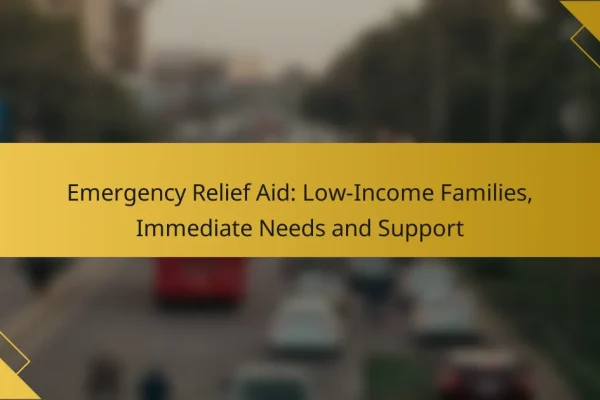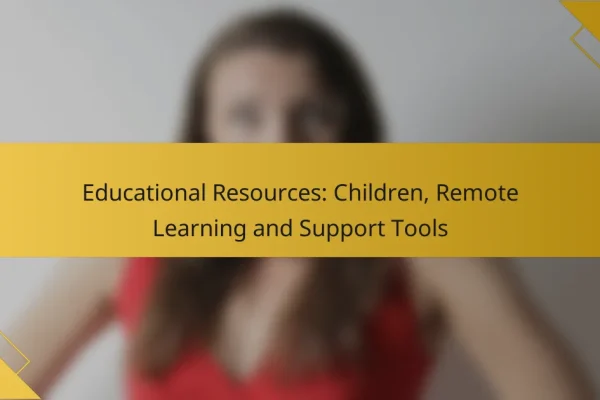What are the types of humanitarian aid?
Humanitarian aid can be categorized into several types, each designed to address specific needs during crises or in developing regions. The main types include emergency relief aid, development aid, food assistance programs, medical aid, and cash transfer programs.
Emergency relief aid
Emergency relief aid is provided in response to immediate crises, such as natural disasters or armed conflicts. This type of aid focuses on saving lives and alleviating suffering through the rapid delivery of essential supplies like food, water, shelter, and medical care.
Organizations often deploy teams quickly to assess needs and distribute resources. For example, after a major earthquake, relief agencies may set up temporary shelters and provide food and medical assistance within days.
Development aid
Development aid aims to improve the long-term economic and social conditions of communities. Unlike emergency relief, this type of aid focuses on sustainable solutions, such as building infrastructure, enhancing education, and promoting economic growth.
Examples include funding for schools, vocational training programs, and agricultural development projects. Development aid often involves partnerships with local governments and organizations to ensure that initiatives are culturally appropriate and effective.
Food assistance programs
Food assistance programs provide essential nutrition to individuals and families in need, particularly in areas facing food insecurity. These programs can take various forms, including direct food distribution, food vouchers, or cash transfers to purchase food.
For instance, the World Food Programme operates initiatives that deliver food directly to vulnerable populations or provide cash assistance to help families buy food in local markets. These programs are crucial in preventing malnutrition and supporting community resilience.
Medical aid
Medical aid encompasses the provision of healthcare services and supplies to individuals affected by crises. This includes emergency medical care, vaccinations, and the distribution of medical supplies and equipment.
Organizations like Médecins Sans Frontières (Doctors Without Borders) often set up field hospitals in conflict zones or disaster-stricken areas to provide urgent care. Medical aid is vital for addressing both immediate health needs and long-term health system recovery.
Cash transfer programs
Cash transfer programs provide financial assistance directly to individuals or families, allowing them to meet their specific needs. This approach empowers recipients to make choices about their expenditures, whether for food, shelter, or healthcare.
These programs can be particularly effective in areas where markets are functioning but households lack sufficient income. For example, cash transfers can help families recover from economic shocks or support them during periods of instability, fostering greater resilience.
How does humanitarian aid address crises in Africa?
Humanitarian aid plays a crucial role in addressing crises in Africa by providing immediate relief and supporting long-term recovery efforts. This assistance can take various forms, including food, medical care, and infrastructure rebuilding, tailored to the specific needs of affected communities.
Immediate disaster response
Immediate disaster response focuses on providing urgent aid to communities affected by crises such as natural disasters, conflict, or disease outbreaks. This typically includes the distribution of food, clean water, shelter, and medical supplies to stabilize the situation and prevent further loss of life.
Organizations often mobilize quickly, deploying teams and resources within days of a crisis. For example, in the aftermath of a flood, aid agencies may set up temporary shelters and distribute hygiene kits to prevent disease outbreaks.
Long-term recovery initiatives
Long-term recovery initiatives aim to rebuild communities and restore livelihoods after an initial disaster response. These programs often focus on infrastructure development, such as rebuilding schools and hospitals, as well as economic recovery through job training and support for local businesses.
Successful long-term recovery requires collaboration with local governments and communities to ensure that initiatives are sustainable and culturally appropriate. For instance, agricultural training programs can help farmers improve their yields and resilience to future shocks, ultimately fostering self-sufficiency.
What are the key organizations providing humanitarian aid?
Several key organizations play a vital role in delivering humanitarian aid globally. These organizations focus on various aspects of assistance, including emergency relief, healthcare, and support for vulnerable populations.
United Nations (UN)
The United Nations coordinates international humanitarian efforts through various agencies, including the United Nations High Commissioner for Refugees (UNHCR) and the World Food Programme (WFP). These agencies work to provide food, shelter, and medical assistance in crisis situations.
UN operations often involve collaboration with local governments and NGOs to ensure aid reaches those in need efficiently. They follow established guidelines, such as the Sphere Standards, to maintain quality and accountability in humanitarian responses.
International Red Cross
The International Red Cross focuses on providing emergency assistance, disaster relief, and education in communities affected by conflict and natural disasters. They operate in nearly every country, offering services such as medical care, food distribution, and support for displaced individuals.
With a strong emphasis on neutrality, the Red Cross engages in humanitarian efforts without taking sides in conflicts. Their extensive network of volunteers allows for rapid response and adaptability in various situations.
Doctors Without Borders
Doctors Without Borders, or Médecins Sans Frontières (MSF), provides medical care in crisis zones, often where healthcare systems are overwhelmed or non-existent. They focus on delivering emergency medical services, including surgery, vaccination campaigns, and maternal care.
MSF operates independently, allowing them to respond quickly to urgent health needs without political constraints. Their work is often funded by private donations, ensuring that aid is directed to where it is most needed without bureaucratic delays.
What criteria should be considered when selecting humanitarian aid types?
When selecting humanitarian aid types, it’s essential to consider the specific needs of the target population, the geographic location of the crisis, and the nature of the crisis itself. These criteria ensure that the aid provided is relevant, effective, and timely.
Target population needs
Understanding the target population’s needs is crucial for effective humanitarian aid. This involves assessing factors such as age, gender, health status, and cultural context. For instance, vulnerable groups like children and the elderly may require specialized assistance, such as nutritional support or medical care.
Engaging with the community can provide insights into their most pressing needs. Surveys or focus groups can help identify whether the population prioritizes food, shelter, healthcare, or education, allowing for tailored aid solutions.
Geographic location
The geographic location significantly influences the type of humanitarian aid required. Different regions may have varying infrastructure, climate conditions, and cultural practices that affect aid delivery. For example, urban areas might need logistical support for distribution, while rural areas may require mobile clinics for healthcare access.
Additionally, local regulations and customs can impact how aid is received and utilized. Understanding these factors can help organizations navigate challenges and ensure that aid reaches those who need it most.
Type of crisis
The nature of the crisis—whether it is a natural disaster, armed conflict, or health emergency—determines the appropriate humanitarian response. Each type of crisis presents unique challenges and requires different resources. For example, a natural disaster may necessitate immediate shelter and food, while a health crisis may focus on medical supplies and vaccination campaigns.
It’s essential to adapt aid strategies based on the crisis type. For instance, in conflict zones, security considerations may limit access, requiring partnerships with local organizations to ensure safe delivery of aid.
How do cash transfer programs work in humanitarian aid?
Cash transfer programs provide financial assistance directly to individuals or families affected by crises, allowing them to meet their immediate needs. These programs can be flexible, enabling recipients to choose how to spend the funds based on their specific circumstances.
Direct financial support
Direct financial support involves giving cash or vouchers to beneficiaries, which they can use to purchase essential goods and services. This method empowers recipients by allowing them to prioritize their needs, whether for food, shelter, or healthcare.
Programs typically assess the financial needs of the affected population and determine the amount of support required. For example, a family in a disaster zone may receive a one-time cash grant of several hundred USD to cover immediate expenses.
When implementing direct financial support, it is crucial to consider local market conditions and inflation rates, as these factors can influence the purchasing power of the cash provided. Ensuring that the cash transfers are timely and accessible can significantly enhance their effectiveness in alleviating hardship.












